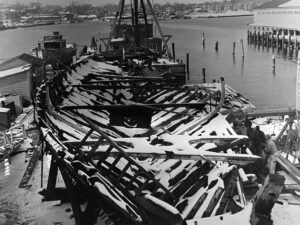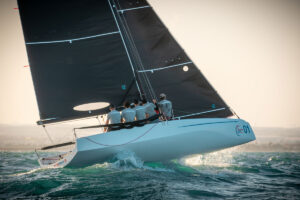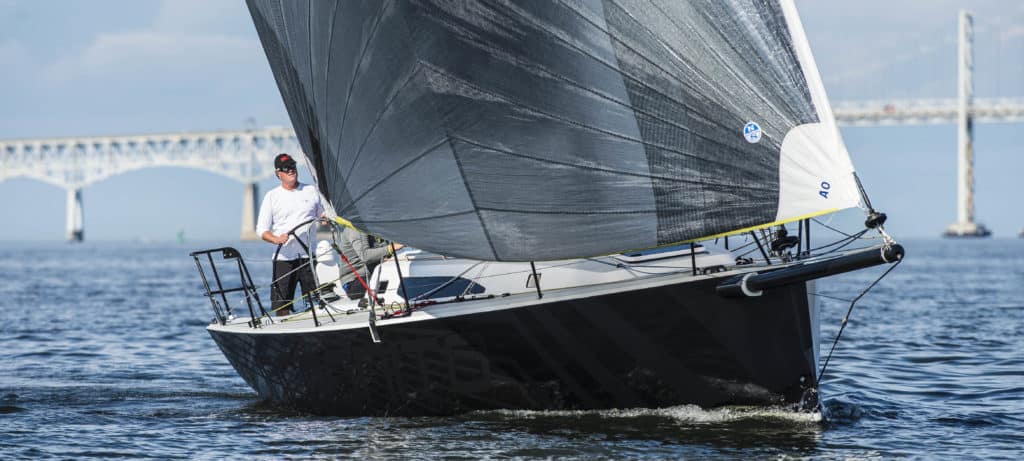
As if on cue, in the midst of our BOTY dockside briefing with J/Boats’ Jeff Johnstone, a middle-aged gentleman appears in the companionway, out of the blue. Johnstone introduces him as an owner, from Portland, Oregon, who is trading in his J/46 for a yet-to-be-built J/121. He climbs down the companionway stairs, interrupts the judging team’s Q&A session, and then promptly cites all the races he intends to enter when he takes ownership of Hull No. 14: the Swiftsure, the Oregon Offshore, the Van Isle 360, and even the Pacific Cup from San Francisco to Hawaii. Moments earlier, Johnstone had explained this very concept: The J/121 is a bucket-list boat. This guy is Exhibit A.
“We saw that signature events were attracting record fleets — the Fastnet Race, the Three-Bridge Fiasco in San Francisco, the Chicago-Mac, for example — all these types of short-handed, adventure-style races where it’s more about the experience than winning,” says Johnstone. “We thought that if we could eliminate half the crew on a 40-footer that’s purpose-built for point-to-point racing but still pass the beer-can and daysail test, we’d have people interested.”
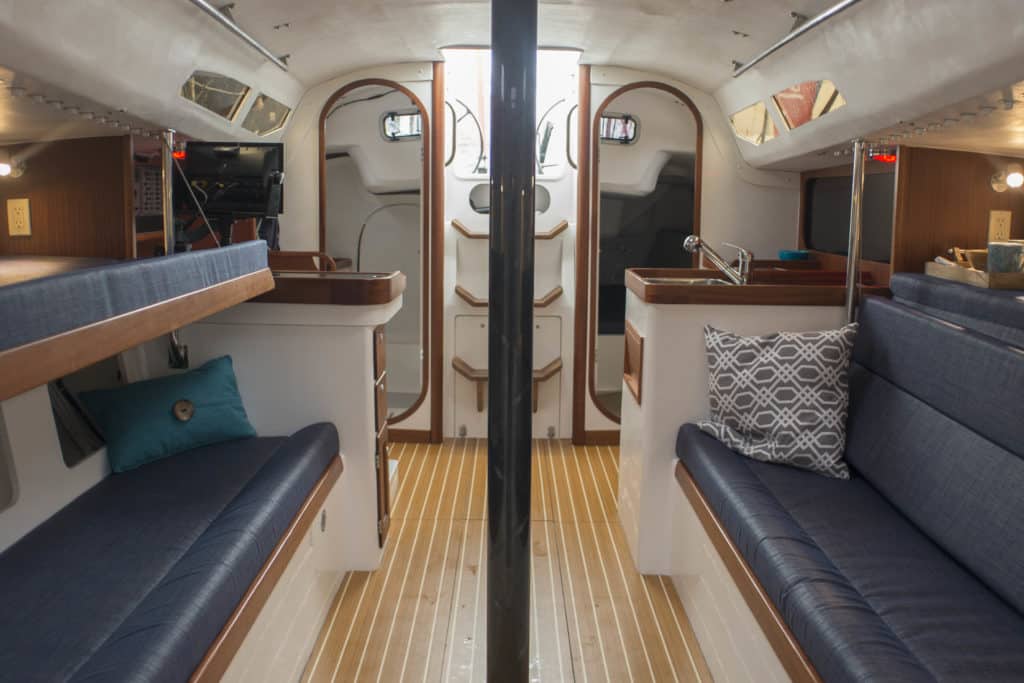
Their research led Johnstone and his brother, Alan, to a design concept built around a crew of five. As for rail meat? No need. That’s what the water ballast tanks are for.
Extra hands to get sails up and down? No need there either. There’s an impressive quiver of headsails, most on roller furlers. With the entire inventory hanging from the rig on halyard locks, and sheets and furling lines spilling into the cockpit, the boat could be easily mistaken for a Class 40 — albeit, one that actually goes upwind.
The J/121’s five-sail inventory is designed for racing with a crew of five. The main has a 10 percent first reef, then a deeper second reef. The primary jib is 105 percent, and a heavy-weather inner jib is about 85 percent. For off-the-wind sailing, there’s a Code Zero and an A2 all-purpose runner.
“This is your classic J Boat in that everything is well-thought-out and works well, and it sails really nicely,” says Rich. “You can race the boat with five people, no problem, although I’m sure you’ll end up with more people who want to go.”
While an owner might have to leave a few friends on the dock in order to reap the benefits of 800 pounds of water ballast, Stewart was unsure the rating hit would be worth the trade-off at times. “ORR hits you on water ballast, at least a little,” he says, “so the question will be whether the water-ballast effect on the displacement will outweigh the rating impact. We’ll have to wait and see.”
Regardless, the point of the boat, the judges all agreed, is not windward/leeward racing but point to point where the tanks remain full for long stretches. The water doesn’t have to leave the rail to get a sandwich or relieve itself.
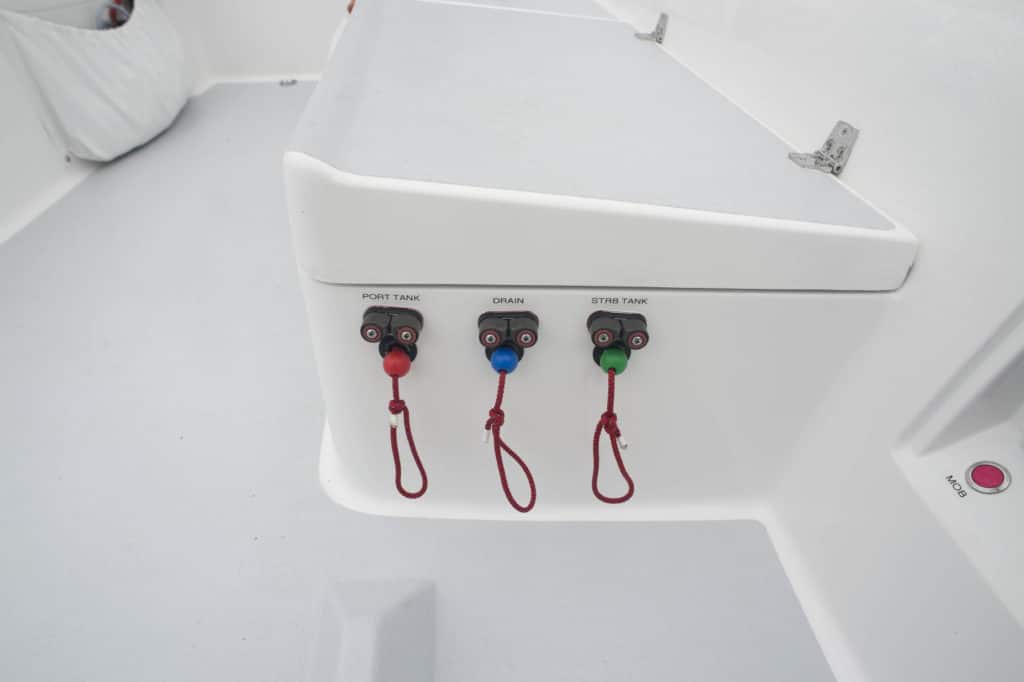
The 121 isn’t configured for cruising, and Johnstone says no one had yet ordered the optional V-berth package. “The interior is function versus form,” he says. There are proper passage-making berths, synthetic flooring, molded furniture and mahogany trim to make it homey enough while taking day-to-day race abuse.
The Johnstones labored long and hard over the deck-hardware mock-ups in order to accommodate the many leads, deflections and loads of the headsail sheets. There isn’t enough side-deck area for athwartships tracks, so the J/121 uses hybrid floating jib leads that allow in-hauling or barber hauling. On a long offshore leg, you can tweak all day long.
While cockpit ergonomics are excellent, says Stewart, and all the winches are well-positioned and easy to work at, the traveler system needs to be rethought. “With the 4-to-1 mainsheet, we couldn’t get the traveler to centerline. Changing it to 2-to-1 might solve that. The winches are plenty strong to allow it.”
The common phrase among the judges was, “There’s a lot going on,” when all the sails are on deck and ready to deploy. “It’ll definitely be a new sort of learning curve for owners in terms of when to use the water ballast and figuring out the sail crossovers. A couple of days of training with a sailmaker, and a good bowman, will be necessary.”
But any good sailor enjoys a good challenge, says Allen, who has sailed the boat in winds far stronger than those experienced during the BOTY test sail. “In 15 to 20 knots, the boat is really fast and stable, with or without the ballast. The rudder never loses its grip. It’s rock-solid in a breeze, a great boat all around.”
At a Glance
| Built For | RDistance Racing, Short-Handed Racing |
| Judges Liked | Overall Performance, Design, Versatility |
| Crew Required | 2-5 |
| Price as Tested | $475,000 |

